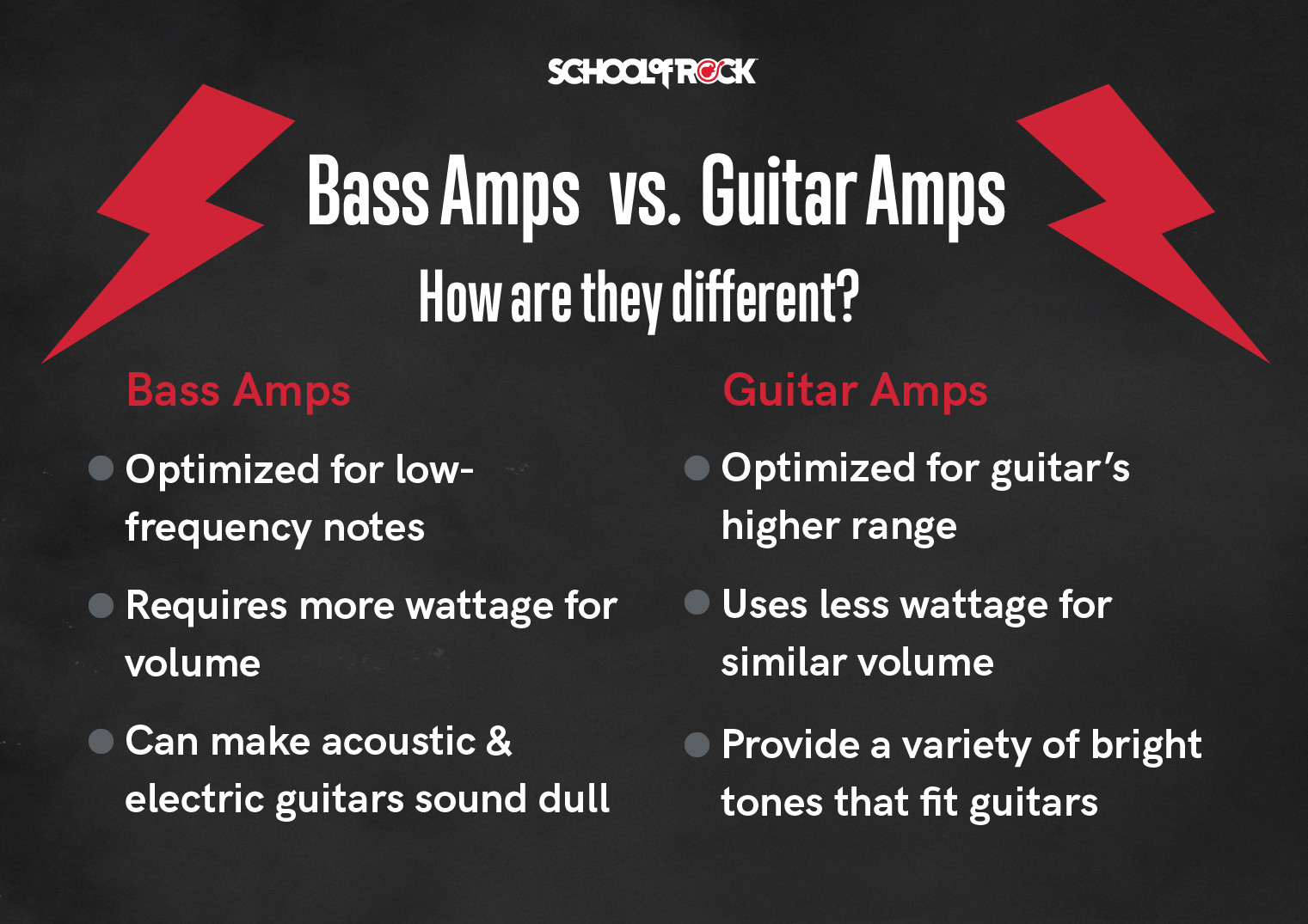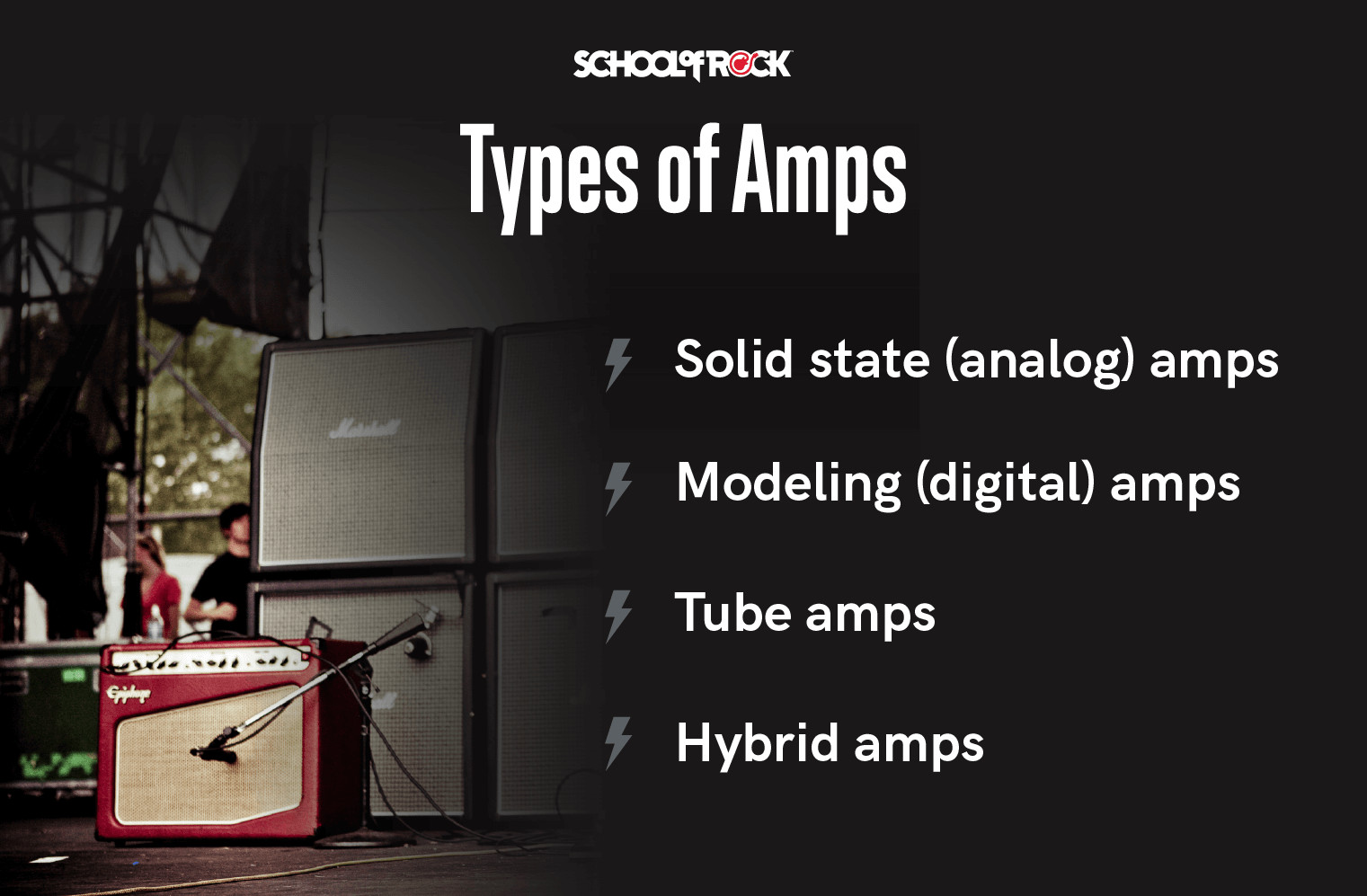So, you’ve got your first electric guitar, and now you’re ready to amplify your sound! Choosing your first guitar amplifier can be exciting but also a bit overwhelming. Guitar amps come in a vast array of types, sizes, and features, making it crucial to understand the basics to make the right choice.
This guide from guitarplayers.net will walk you through everything you need to know when you Buy Guitar Amp for the first time. We’ll break down the essential elements, from combo amps to wattage, helping you find the perfect amp to kickstart your musical journey.
Understanding Guitar Amp Basics
Before diving into the specifics, let’s cover some fundamental concepts that will help you navigate the world of guitar amps. For beginners, a combo amp is generally the best place to start.
Combo amplifiers are all-in-one units that house the speaker, preamp, and power amp in a single cabinet. The preamp is responsible for shaping your guitar’s tone, while the power amp boosts the signal and sends it to the speaker to produce sound.
While combo amps are a great starting point, there’s much more to explore to find an amp that truly matches your musical style and preferences.
“For beginners looking to buy guitar amp, starting with a combo amp is highly recommended due to its simplicity and all-in-one design.”
Combo Amp vs. Amp Head and Cabinet: Which to Buy?
As mentioned, combo amps integrate everything into one unit. The alternative configuration is a separate amp head and speaker cabinet. The head contains the preamp and power amp sections, while the cabinet houses the speaker(s).
For home practice, portability, and smaller venues, combo amps are the preferred choice for most guitarists. Their compact size and ease of setup make them incredibly convenient.
Combo amps often come with additional features that are particularly useful for practice, such as headphone jacks for silent playing and auxiliary input jacks for jamming along with your favorite songs or backing tracks.
Pro Tip: Always Test Before You Buy
Just like you wouldn’t buy shoes without trying them on, you should always test a guitar amp before you buy it. Bring your guitar to your local music store and plug it into the amp you’re considering. Ensure your guitar is properly tuned, and ask the store staff to help you set up the amp so you can hear how it sounds with your own instrument. This hands-on experience is invaluable in making the right purchase decision.
Bass Amp vs. Guitar Amp: Are They Interchangeable?
 bass amps vs guitar amps
bass amps vs guitar amps
Alt text: Side-by-side comparison of a bass amplifier on the left, characterized by a larger speaker and cabinet, and a guitar amplifier on the right, highlighting the distinct design and purpose of each for their respective instruments.
It’s important to understand that bass amps and guitar amps are designed for different instruments and frequency ranges. They are not interchangeable. Guitar amps are engineered to reproduce the frequencies of a guitar, while bass amps are built to handle the much lower frequencies of a bass guitar.
Using a guitar amp for a bass guitar can damage the speaker due to the low frequencies. Conversely, using a bass amp for a guitar will typically result in a dull, lifeless sound lacking the sparkle and definition that a guitar amp provides. To get the best tone and inspire your practice sessions, always use a dedicated guitar amp for your electric guitar.
Key Factors When You Buy Guitar Amp for the First Time
Purchasing your first guitar amp is a significant step, and you want to ensure you’re making a sound investment. Let’s explore the key features to consider when choosing the best guitar amp for beginners.
Guitar Amp Size and Portability
The size of a guitar amp is a crucial factor, especially for beginners. Guitar amps range from tiny, ultra-portable micro amps to large, powerful rigs with multiple speaker cabinets.
Ideal Guitar Amp Size for Practice
For practicing guitar at home, a small practice amp is generally sufficient. These amps are designed to be compact and easy to transport, making them ideal for musicians who need an amp for home use, small practice spaces, or for taking to lessons.
Guitar Amp Wattage and Speakers: What Matters?
Two important specifications to understand when selecting a guitar amp are wattage and speaker configuration. These factors significantly influence the amp’s volume and sound characteristics.
Understanding Guitar Amp Wattage
There’s often confusion surrounding guitar amp wattage. While it’s true that wattage relates to power and potential loudness, it’s not a linear relationship. Doubling the wattage does not double the perceived loudness. In fact, a 30-watt amp is only about 5 decibels quieter than a 100-watt amp. The perceived loudness increase is not as dramatic as the wattage numbers might suggest.
 deciding amp wattage to use
deciding amp wattage to use
Alt text: Illustration depicting various guitar amplifier sizes and their corresponding wattage levels, emphasizing the point that higher wattage doesn’t linearly translate to double the loudness, and highlighting appropriate wattage ranges for different playing environments.
Choosing the Right Speaker Configuration
Many guitarists find that amps sound their best when the volume is turned up to around the halfway point. If you consistently play your amp at very low volume settings (e.g., below 3 on the volume knob), a smaller wattage amp might be more suitable. You want to be able to push the amp a bit to get the desired tone without excessive volume.
Speaker size and configuration also play a role in the sound. Common speaker configurations include single 12-inch, dual 12-inch, and quad 12-inch speakers. For most typical gigs and practice situations, a 1×12″ or 2×12″ speaker setup is usually adequate. Remember that in many live performance scenarios, your amp will be miked and amplified through the PA system, reducing the need for massive stage volume from your amp itself.
Practice at Home vs. Playing Live
For home practice, you typically don’t need a high-wattage amp. An amp in the 10-20 watt range is often more than sufficient. Using a very powerful amp at home is like having a sports car you can only drive in first gear – you’re not utilizing its potential. Lower wattage amps are ideal for achieving good tone at practice-friendly volumes.
Practice amps usually feature a single speaker, often between 8 and 12 inches in diameter. These amps are designed for home use at moderate volumes, while larger, more powerful amps are reserved for stage performances.
Guitar Amps for Recording
In a recording studio setting, smaller amps are often preferred. Interestingly, legendary guitarist Jimmy Page famously used a small 15-watt Supro combo amp in the studio to create the iconic, massive guitar tones on early Led Zeppelin albums. This demonstrates that great recorded tone doesn’t always require a huge amplifier.
Some guitarists even employ multiple amps in the studio, blending their sounds to achieve unique and complex tones. The possibilities are virtually limitless in a studio environment.
Guitar Amps for Live Performances
For live gigs, the need for enormous, deafening guitar amps has diminished. Most venues now utilize microphones to capture the sound of amps and run them through the venue’s sound system, providing better control over the overall mix for the audience. Stage monitors also ensure that you and your bandmates can hear yourselves clearly.
The primary consideration for live performance is having enough amp volume to compete with the natural volume of a drum kit on stage. Surprisingly, many bands playing in large arenas often use “dummy cabs” – empty speaker cabinets purely for visual aesthetics! For most live situations, an amp in the 30-50 watt range with a 1×12″ or 2×12″ speaker cabinet is usually sufficient.
Larger 4×12 cabinets are sometimes used, particularly by bands in heavier genres, for a bigger stage presence and sound. However, full stack 100-watt amps with multiple cabinets are generally only necessary for very large venues or when aiming for extreme stage volume.
Guitar Amp Tone and Effects: Shaping Your Sound
The type of music you want to play will heavily influence the kind of guitar amp you should consider buying. Understanding basic amp tone controls and built-in effects is essential to making an informed decision.
1. EQ Controls and Settings
Virtually all guitar amps feature some form of equalization (EQ) controls. These typically include knobs labeled “Treble,” “Mid,” and “Bass.” These controls allow you to shape the frequency response of your amp and sculpt your desired tone. EQ is a fundamental aspect of any amp, enabling you to adjust the amp’s sound to suit different guitars, playing styles, and room acoustics.
2. Distortion/Gain
Most guitar amps have a gain knob. This control determines the amount of distortion or overdrive in your sound. Higher gain settings produce a distorted, crunchy, or saturated tone, often used in rock, metal, and blues music. Lower gain settings result in cleaner tones, suitable for genres like jazz, country, and clean pop styles.
3. Reverb
Reverb is a common effect that simulates the natural reflections of sound in a space, creating a sense of depth and ambiance. It emulates the sound of playing in a room or hall. While not all guitar amps include reverb, it’s a frequently found feature, especially in practice amps, adding warmth and dimension to your tone.
4. Digital Effects
Many modern guitar amps incorporate digital effects. These can range from simple effects like chorus, flanger, and phaser to more complex delays and modulation effects. While effects can be fun and inspiring, beginners should avoid getting overwhelmed by too many options initially.
Built-in digital effects offer a convenient way to experiment with different sounds without needing to buy individual effects pedals. As you progress and consider upgrading to a larger amp for live use, you can then selectively choose specific effects pedals to build a custom pedalboard.
5. Multiple Channels
Some guitar amps offer multiple channels, typically two or three, each with different tone settings and gain levels. This allows you to switch between different sounds, such as clean, crunch, and lead tones, at the press of a button. Channel switching is often controlled via a footswitch for easy transitions during performances. Even some single-channel amps include footswitchable features to toggle effects on and off.
Guitar Amp Quality and Brands
While extra features are appealing, the overall quality of a guitar amp is paramount. Reputable guitar amp manufacturers like Fender are known for producing high-quality amps across various price points and feature sets.
Fender, for example, is a trusted brand and widely used in music education settings due to the reliability and sound quality of their amps. Many vintage Fender amps from the 1950s, 60s, and 70s are still highly sought after and used today, a testament to their enduring quality and durability. Investing in a quality amp from a reputable brand can significantly enhance your playing experience and provide years of reliable use.
Guitar Amp Flexibility for Different Music Styles
Another important consideration is the range of musical styles you intend to play. The best guitar amp for practice, especially for beginners, should be versatile enough to cover a wide spectrum of genres, from metal and rock to country, blues, and jazz.
While experienced players with a very specific sound in mind might opt for a specialized “one-trick pony” amp that perfectly nails their signature tone, beginners benefit most from a flexible amp that allows for sonic exploration. This versatility makes practice more engaging and prevents you from being limited to a single sound as you develop your musical taste.
Types of Guitar Amps: Exploring Your Options
The market offers various types of guitar amps, each with its own characteristics and advantages. The primary categories are tube amps, solid-state amps, hybrid amps, and modeling amps.
 types of guitar amps include solid state, modeling, tube and hybrid.
types of guitar amps include solid state, modeling, tube and hybrid.
Alt text: A visual breakdown illustrating the four main types of guitar amplifiers: Solid State, known for reliability; Modeling, offering versatile amp simulations; Tube, prized for warm, rich tones; and Hybrid, combining tube and solid-state technologies.
Solid-State vs. Tube Guitar Amps: The Classic Debate
Most professional-level stage amps historically relied on tubes (vacuum tubes) for their power sections, with modeling amps being a notable exception. Tube amps are celebrated for their warm, rich tone, natural compression, and pleasing harmonic distortion when pushed to higher volumes.
Solid-state amps, on the other hand, have improved significantly in recent years. Some guitarists, particularly in metal genres, prefer the fast attack and tight bass response of solid-state amps. Solid-state amps are generally more reliable and require less maintenance than tube amps.
Solid-State or Tube Amp for Beginners?
For beginners seeking their first guitar amp, solid-state amps often present a more practical and user-friendly choice. They are typically more affordable, more robust, and require minimal maintenance compared to tube amps, making them a reliable “plug-and-play” option.
Hybrid Guitar Amps: Blending Technologies
Hybrid amps aim to combine the desirable qualities of both tube and solid-state technologies. While some older hybrid designs featured tube power sections and solid-state preamps, modern practice-oriented hybrid amps typically employ a tube preamp section paired with a solid-state power amp. This configuration leverages tubes for tone shaping in the preamp stage and solid-state technology for reliable power amplification.
Choosing a Hybrid Guitar Amp
When considering a hybrid guitar amp, look for models that utilize 12AX7 preamp tubes. These are highly regarded preamp tubes known for their contribution to classic tube amp tones. A hybrid design with 12AX7 preamp tubes can offer a good balance of tube warmth and solid-state reliability, often at a more accessible price point than a full tube amp.
Modeling Guitar Amps: Versatility in a Box
Modeling amps have gained immense popularity over the past 25 years, especially among beginners and home-based guitarists.
Benefits of Modeling Guitar Amps
Modeling amps offer a wide array of amp sounds in a single unit. They use digital technology to emulate the tones of various classic and modern amplifiers. Advanced “profiler” amps have even emerged in recent years, used by professional players, capable of capturing and replicating the sonic characteristics of sought-after vintage amps. This technology allows access to a vast palette of tones in one amplifier.
Are Modeling Amps Good for Beginners?
Modeling amps are often an excellent choice for beginners. They provide a fantastic way to explore different amp models and tones, helping you discover the sounds that resonate with your playing style and musical preferences. The versatility of modeling amps can be incredibly inspiring for beginners still developing their sonic identity.
Selecting a Modeling Guitar Amp
When choosing a modeling amp, prioritize models that offer a diverse range of amp simulations. Look for amps that include emulations of classic clean Fender amps, British-style Marshall amps, and high-gain tones suitable for heavier genres. A good modeling amp should also offer a variety of built-in effects, such as reverb, delay, chorus, phaser, flanger, and tremolo, further expanding your sonic possibilities.
Other Guitar Amp Types
Beyond the main categories, there are specialized types of guitar amps designed for specific applications.
Acoustic Guitar Amps
Acoustic guitar amps are specifically designed for amplifying acoustic guitars for live performance. They are engineered to reproduce the natural acoustic tones of your guitar accurately and often include features like microphone inputs and effects tailored for acoustic instruments, allowing you to add effects and shape the sound of your acoustic guitar in a live setting, similar to how electric guitarists use effects.
Guitar Amp Simulators
For recording electric guitar at home or practicing silently, guitar amp simulator software provides a digital alternative to physical amps. These software programs emulate the sound of various amplifiers and effects, allowing you to record directly into your computer or practice through headphones. Some musicians even use amp simulator software in live performance scenarios, eliminating the need for traditional guitar amps altogether.
School of Rock Recommendations
Choosing the best guitar amp for your needs is a crucial step in making practice enjoyable and your musical journey rewarding. School of Rock generally recommends that students start with a small, affordable practice amp like a Fender Mustang. These amps offer a wide range of sounds and features in a compact, portable package, providing excellent versatility for beginners.
For rehearsals and live performances within School of Rock programs, larger amps are provided. Students are encouraged to try out different amps and compare features to make informed purchasing decisions. Ultimately, finding an amp that inspires you to play is key.
Ready to Start Amplifying Your Sound?
Hopefully, this guitar amp buying guide has provided you with the knowledge you need to confidently buy guitar amp for your first setup. Choosing the right amp is a significant step in your musical journey, alongside selecting your first electric guitar.
Learning a new instrument should be an exciting and fulfilling experience. Selecting the best guitar amp for your needs is just the beginning of your musical adventure.
Learning with a Performance-Based Approach
At guitarplayers.net, we believe in a hands-on, performance-focused approach to learning guitar. Our comprehensive guitar lessons are designed to guide you step-by-step, building your skills and confidence so you can take the stage and rock with a band.
Explore our resources, connect with instructors, and embark on your exciting guitar playing journey today!
Related Articles
 How to Have the Stage Presence of a Guitarist hero image
How to Have the Stage Presence of a Guitarist hero image
How to Have the Stage Presence of a Guitarist
 The 8 Best Alternate Guitar Tunings hero image
The 8 Best Alternate Guitar Tunings hero image
The 8 Best Alternate Guitar Tunings
 Closeup of a School of Rock student guitarist
Closeup of a School of Rock student guitarist
